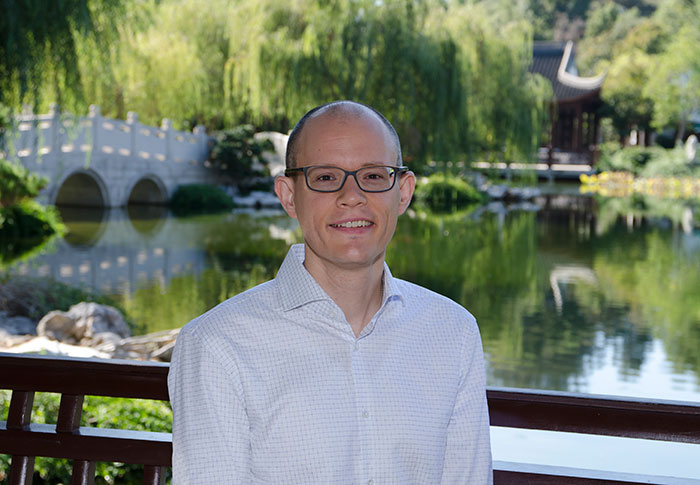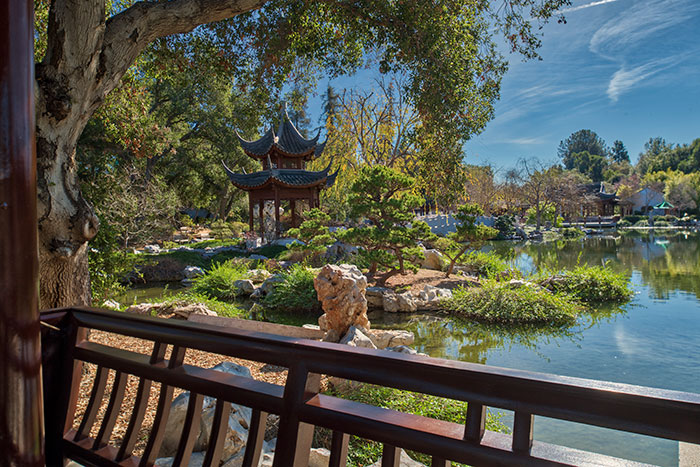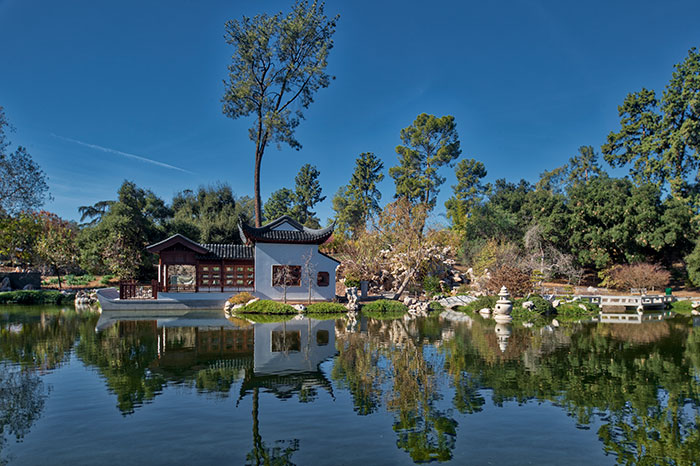The Huntington’s blog takes you behind the scenes for a scholarly view of the collections.
Coming Home
Posted on Thu., Feb. 15, 2018 by

Phillip E. Bloom is the June and Simon K.C. Li Curator of the Chinese Garden and Director of the Center for East Asian Garden Studies at The Huntington. Photo by Lisa Blackburn.
Before Phillip E. Bloom applied to become The Huntington’s Curator of the Chinese Garden, he spent two days exploring and contemplating Liu Fang Yuan, the Garden of Flowing Fragrance—first alone and later with his wife, Yurika Wakamatsu, who had just taken a position as an assistant professor in the Department of Art and Art History at Occidental College.
Coming to San Marino from Indiana University, where he was an assistant professor of East Asian art, Bloom was enthralled by the thoughtfulness that marked the garden’s planning and construction; the exacting placement of plants, rocks, and water in relation to the architectural features; and the use of poetry and literature to name and enliven each pavilion. But what really surprised Bloom, who grew up in Montana and has lived in many far-flung locales both in the United States and abroad, was Southern California itself.
“Neither of us had spent much time here before, but when Yurika came for her job interview, she felt more at home than anywhere she’d ever been,” says Bloom. “I could see why. It’s exciting to live in a place where Asia really matters. And there are so many other ethnic communities and cultures that coexist with a fluidity we’d never seen before.”

Pavilion of Three Friends and Lake of Reflected Fragrance in The Huntington’s Liu Fang Yuan, the Garden of Flowing Fragrance. Photo by Martha Benedict.
Bloom and Wakamatsu met while in graduate school at Harvard University, where they both earned their doctorates in East Asian art history. Bloom specializes in the visual culture of China’s Song Dynasty (960–1279).
Since becoming the new June and Simon K.C. Li Curator of the Chinese Garden and Director of the Center for East Asian Garden Studies in September, Bloom has loved watching the way people from the region’s diverse communities interact with the space. True to the way it was conceived, the 10-year-old Liu Fang Yuan functions as a place where different cultures gather not only for beauty but also for inspiration, to create something new, from art and friendships to cultural understandings. "In just the short while I've been here, I've loved watching the range of experiences—from young schoolchildren learning about poetry and plants, to grown-up crowds enjoying the food, art, and musical performances," says Bloom. (And he'll no doubt witness more such experiences when visitors come to celebrate the Chinese New Year Festival at The Huntington on Feb. 17 and 18, from 10 a.m. to 5 p.m.)

The Huntington will celebrate the Chinese New Year with a cultural festival on Feb. 17 and Feb. 18 (Sat. and Sun.), from 10 a.m. to 5 p.m. Visitors can enjoy music, dance, demonstrations, exhibitions, Chinese cuisine, and performances, including those by lion dancers. Photo by Martha Benedict.
Continuing to engage the region’s diverse communities is Bloom’s paramount goal, and he is eager to collaborate with his counterparts at other museums and institutions of higher learning to share ideas and to develop partnerships that will lead to exhibitions and new public programs.
“Part of the appeal of coming to Southern California was that there’s a higher density of historians of Asian art than almost anywhere else in the U.S,” says Bloom.
As coordinator of the institution’s East Asian garden lecture series, Bloom also sees great potential in sharing the dynamic scholarship from Huntington-hosted symposiums with a wider audience—especially college students and interested members of the general public—by developing a publication series and a digital journal.
“I am eager to create a body of scholarship that can be used for university teaching,” says Bloom. “When you read scholarly articles on East Asian gardens, they somehow tend to make the garden feel quite dead, so I am eager to create a body of scholarship that can be used for teaching undergraduates.”

The Waveless Boat pavilion and the Lake of Reflected Fragrance in Liu Fang Yuan, the Garden of Flowing Fragrance. Photo by Martha Benedict.
With all this on his plate, Bloom and Wakamatsu have still found time to become full-fledged Angelenos, indulging their love for art, music, and food. With Los Angeles’s status as an important hub of Asian culture and influence and The Huntington’s own critical role in promoting the appreciation of Asian culture as part of our shared global heritage, Bloom says they have found an exciting and comfortable place to call home. And, he says, “I don’t ever want to leave.”
You can listen to Phillip Bloom’s inaugural lecture at The Huntington, “The Ecology of Eternity in a Song-Dynasty Buddhist Monastery,” on SoundCloud.
Manuela Gomez Rhine is a freelance journalist based in Pasadena, California.